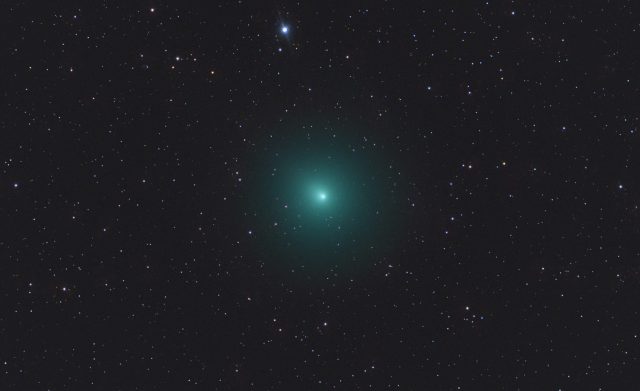
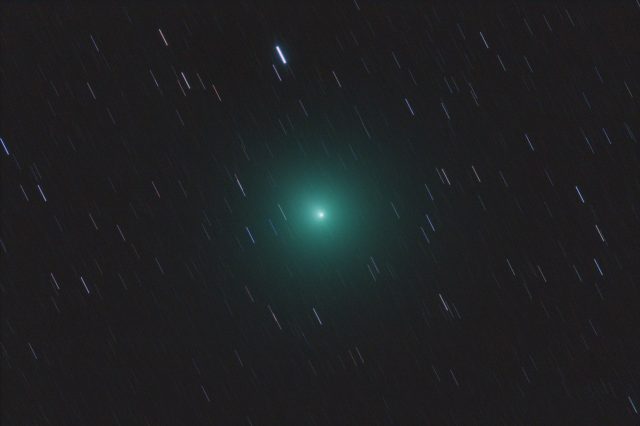
The first shots of the night of Dec 10, 2018 were some 30 second ISO 6400 sub-images of Comet 46P/Wirtanen and the last 4 shots were 5 minute subs at ISO 3200 of the same, but guided on the comet instead of the stars. I mixed in some 60 sec ISO 6400 and ISO 3200 subs in the middle. The first image above is a combination of three sets – the 300 sec ISO 3200 subs and all of the ISO 6400 ones. The second image is just the 30 second ISO 6400 subs alone in a star streaks rendition.
Before I could even start shooting, I had to take the mount apart in the field and unstick a stuck motor that was giving me lots of trouble. I almost thought I would scratch and not get any shots of this naked eye comet. Luckily, I had tools and was able to rectify the situation.
I had trouble seeing the comet naked eye at first, but as soon as it rose high enough out of the muck, I was able to spot it without optical aid. I was at my Bortle 4/Green zone site and it was probably the clearest night so far this season. So, conditions were exceptional and it was cold enough (down to 37 degrees F) to use ISO 6400 without too much noise.
I still have one other set of 1 minute, ISO 3200 subs left to process. I’ll probably be updating this post later after I do them.
Edit:
Yep, I was able to get these 40×60 sec ISO 3200 sub-images calibrated and stacked. Here’s the result of them by themselves:
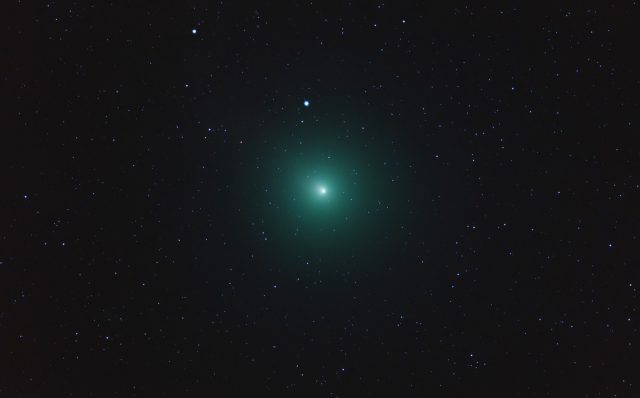
Not too bad for 1 minute exposures. Color could have been better. Oh, well….
For an encore, I have this animated GIF showing the movement of the comet for just under an hour of time:
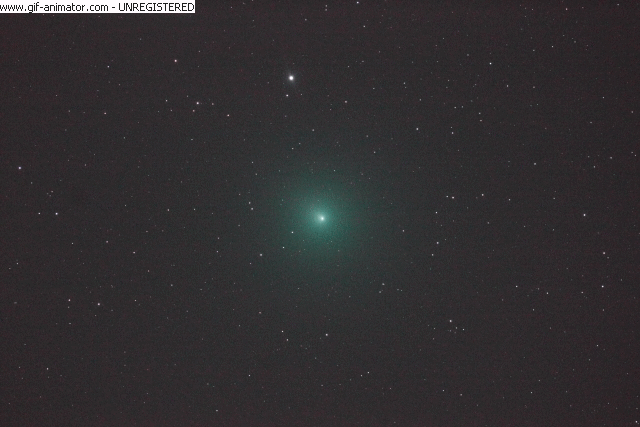
While the comet is moving and will blur if you expose too long while tracking the stars, you can also track it and expose for much longer. I tried 5 minute ISO 3200 sub-images and managed to get 4 like that before I tore down the rig. Here are two of them together for a total of 10 minutes of exposure:
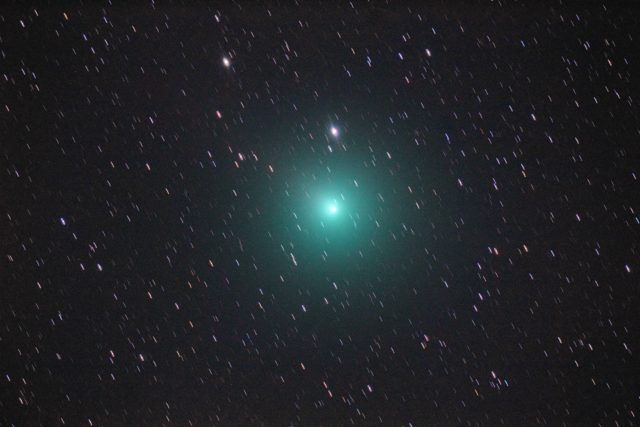
Finally, here is the set of 40 x 1 minute ISO 6400 sub-images with a little bit of the above data and labels describing the image:
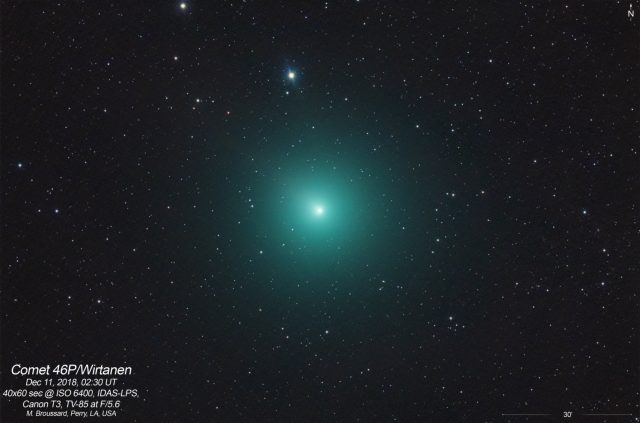 I was surprised at how well ISO 6400 worked out. Usually, it is too warm to shoot at this setting. It was 37 F when I got back to my place and shot the darks. I just left the scope outside and did them while I napped. It was probably a little warmer when I took these subs, but close enough to calibrate the extra noise out of them.
I was surprised at how well ISO 6400 worked out. Usually, it is too warm to shoot at this setting. It was 37 F when I got back to my place and shot the darks. I just left the scope outside and did them while I napped. It was probably a little warmer when I took these subs, but close enough to calibrate the extra noise out of them.
